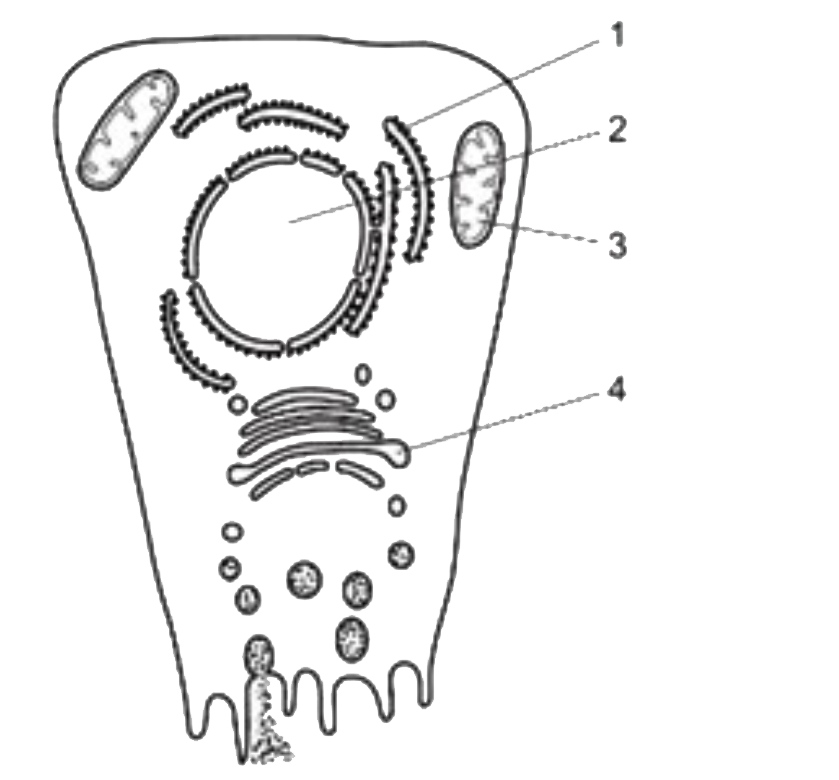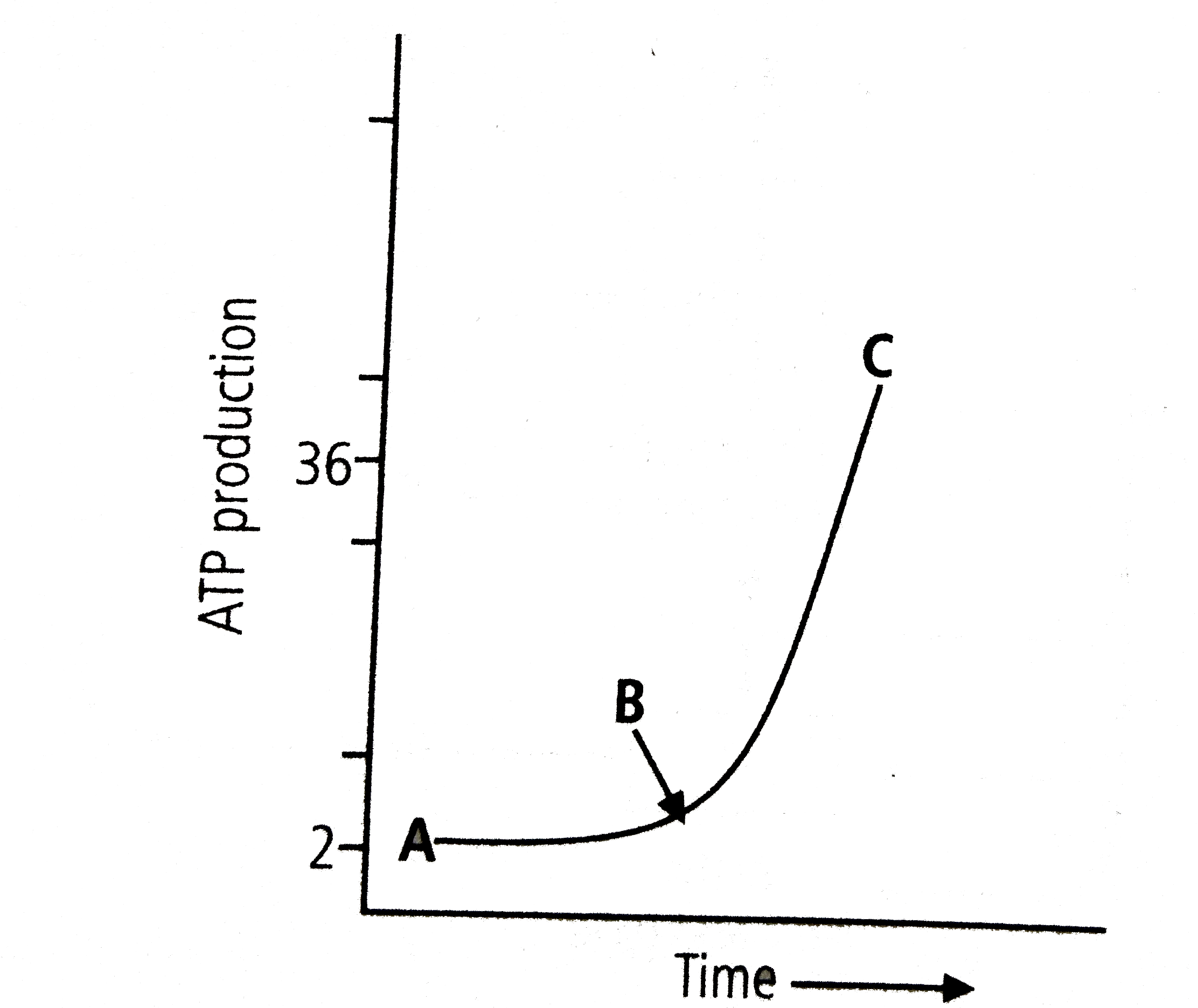An animal cell was grown in a culture medium containing P32 nucleotides, the parts from which DNA is built. Later examination of the cell showed the radioactivity to be concentrated in the
Golgi body
nucleus
rough ER
smooth ER
The correct Answer is:B
To solve the question regarding the concentration of radioactivity in an animal cell grown in a culture medium containing P32 nucleotides, we can follow these steps:
1. Understanding P32 Nucleotides:
- P32 is a radioactive isotope of phosphorus. It is commonly used as a tracer in biological experiments because it can be incorporated into nucleic acids (DNA and RNA).
2. Identifying the Role of Nucleotides:
- Nucleotides are the building blocks of nucleic acids. When P32 nucleotides are introduced into a culture medium, they will be incorporated into the DNA and RNA of the cells.
3. Examining Cell Structures:
- The question asks where the radioactivity from P32 is concentrated after the cell has been grown in this medium. The main cellular structures to consider are:
- Nucleus: Contains the cell's genetic material (DNA).
- Golgi Body: Involved in packaging and modifying proteins, not primarily involved in nucleic acid synthesis.
- Rough Endoplasmic Reticulum (RER): Associated with protein synthesis, contains ribosomes, but does not contain DNA.
- Smooth Endoplasmic Reticulum (SER): Involved in lipid synthesis, does not contain DNA.
4. Determining the Location of Radioactivity:
- Since P32 nucleotides are incorporated into nucleic acids, the location where the radioactivity will be concentrated is where DNA and RNA are found. The nucleus is the primary site for DNA, and it also contains RNA.
5. Conclusion:
- Based on the above analysis, the radioactivity from P32 nucleotides will be concentrated in the nucleus of the animal cell.
Final Answer:
The radioactivity will be concentrated in the nucleus.
---
- P32 is a radioactive isotope of phosphorus. It is commonly used as a tracer in biological experiments because it can be incorporated into nucleic acids (DNA and RNA).
- Nucleotides are the building blocks of nucleic acids. When P32 nucleotides are introduced into a culture medium, they will be incorporated into the DNA and RNA of the cells.
- The question asks where the radioactivity from P32 is concentrated after the cell has been grown in this medium. The main cellular structures to consider are:
- Nucleus: Contains the cell's genetic material (DNA).
- Golgi Body: Involved in packaging and modifying proteins, not primarily involved in nucleic acid synthesis.
- Rough Endoplasmic Reticulum (RER): Associated with protein synthesis, contains ribosomes, but does not contain DNA.
- Smooth Endoplasmic Reticulum (SER): Involved in lipid synthesis, does not contain DNA.
- Since P32 nucleotides are incorporated into nucleic acids, the location where the radioactivity will be concentrated is where DNA and RNA are found. The nucleus is the primary site for DNA, and it also contains RNA.
- Based on the above analysis, the radioactivity from P32 nucleotides will be concentrated in the nucleus of the animal cell.
The radioactivity will be concentrated in the nucleus.
Topper's Solved these Questions
Similar Questions
Radioactively - labelled d- nucleotides are introduced into a cell.

In which cell structures will the radioactively first become concentrated ?
View SolutionA bacterium divides every 35 minutes. If a culture containing 105 cells/ml is grown for 2 hours 55 minutes, what will be the cell concentration per ml?
View Solution
Knowledge Check
A.cell is grown in a solution which contain radioactive nucleotides, so that DNA is labelled with radioactivity . It is issolated from the radioactive solution and grown in a normal medium. So that any new DNA strands it makes will not be radioactive. the cell replicates its DNA and divides in the normal medium . the two daughter cell also replicates their DNA and divide, producing a total four cell. if a dotted line represent a radioactive DNA strand and a solid line repreesents a nonradioactive DNA strand, which of the following depicts the DNA of the four cell
A B
B C
C D
D
Animal cells are suspended in a culture medium that contains excess glucose. The graph below shows glucose utilisation under different growth conditions (A),(B), and (C) in the graph indicate
 AA-Anaerobic respiration
AA-Anaerobic respiration
B-Introduction of O2 to culture medium
C- Aerobic respirationBA-Aerobic respiration
B-Introduction of O2 to culture medium
C- Anaerobic respirationCA-Aerobic respiration
B-Supply of organic triphosphate
C-Aerobic respirationDA-Aerobic respiration
B-Introduction of CO to culture medium
C-Anaerobic respiration.A mixture of equal numbers of fast and slow dividing cells is cultures in a medium containing a trace amount of radioactively labeled thymidine for one hour. The cells are then transferred to regular (unlabelled) medium. After 24 hrs of growth in regular media
Afast dividing cells will have maximum radioactivityBslow dividing cells will have maximum radioactivityCboth will have same amount of radioactivityDthere will be no radioactivity in either type of cells
A bacterium divides every 35 minutes. If a culture containing 105 cells/ml is grown for 175 minutes. What will be the cell concentration / ml after 175 minutes
View SolutionA scientist was studying the production of a protein that was released by an animal cell into a culture medium, she found that the protein only appeared in the culture medium after the added a few drops of a hormone to the cell. Before adding the hormone, she labelled the protein inside the cell with a fluorescent dye and looked at the cell under the lgiht microscope. The dye was seen in flattened sheets and tube. like structures throughout the cell, and in stacks of flattened sac-like structures. after adding the hormone, the dye was aslo seen as small dots clustered against the cell membrane, Which statement most likely explains these observations?
View SolutionThere are 5 test tubes having a culture medium containing rough colonies of streptococcus pneumoniae. The following substances were added in them. Which of these test tubes will show smooth colonies of streptococcus pneumoniae on incubation for some time?
Test tube I: RNA from a heat-killed smooth strain of streptococcus pneumoniae
Test tube II: DNA from a heat-killed smooth strain of streptococcus pneumoniae
Test tube III: Protein from a heat-killed smooth strain of streptococcus pneumoniae
Test tube IV: Carbohydrate from a heat-killed smooth strain of streptococcus pneumoniae
Test tube V: Heat killed smooth strain of streptococcus pneumoniae incubated with DNAse enzyme
View SolutionA bacterium divides every 35 minutes. If a culture containing 105 cells/ml is grown for 175 minutes. What will be the cell concentration / ml after 175 minutes
View SolutionA bacterium divides every 35 minutes. If a culture containing 105 cells/ml is grown for 175 minutes. What will be the cell concentration / ml after 175 minutes
View Solution
